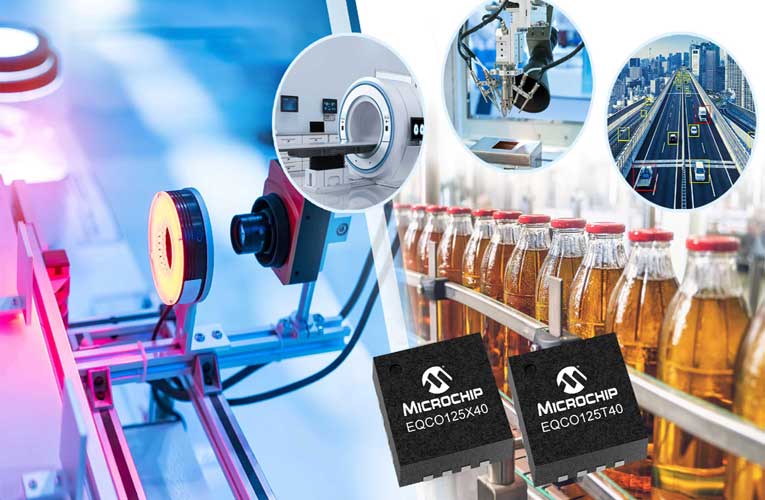
Microchip Technology introduced the 12.5Gbps CoaXPress 2.0 (machine-vision image-capture solutions) interface standard in its EQCO125X40 family of CoaXpress. This new release brings the full potential of CoaXPress (CXP) on the factory floor by including features that streamline the machine vision system design, maximize transmission speed and simplify deployment in high-volume bottling operations, food inspection, industrial inspection, and imaging applications.
The EQCO125X40 family is designed with a clock data recovery (CDR) at all speed levels and a camera- side clock to support the demands of real-world environments. This helps in increasing the machine-vision processing throughput by allowing the cameras and capture cards to transmit four to eight times faster than the other available solutions. The devices also enable four times the cable/link distance with much lower power and near-zero latency.
The devices can lock on all frequencies at any speed from CXP-1 to CXP-12 and do not need multiple channels as it can support 12.5Gbps of bandwidth over a single cable. The devices provide a better design tolerance and flexibility, hence they can be installed where ever they are needed and the integrated CDR improves jitter performance for the signal sent from the camera to capture the card.
The EQCO125X40 doesn’t need programming of a separate clock in the FPGA as they have an on-camera low-frequency clock recovery, and with the help of its integrated link signal integrity testing, the system can perform real-time checks of cable link integrity before and during operations.
With these new devices, card makers can now easily and inexpensively develop more robust products with the help of its pre-setup and real-time cable link quality tests to be performed. They can also scale up to 50GBps over multiple cables. The CXP devices can be used to retrieve a real-time low-frequency clock at the camera side for more accurate signal timing and it also allows the manufacturer to use it as a cable repeater, which extends the distance over which the cameras can be linked. Their low power consumption can help in the development of smaller, better- performing image-capture solutions, this increases the customer value with a simpler and low-cost design.
The company believes that the new devices can help to accelerate the adoption of better-performing, lower-cost machine-vision solutions in industrial inspection applications. They also belove that the CoaXPress 2.0 family will have an equally transformational effect on applications including traffic monitoring, surveillance and security, medical inspection systems, and embedded vision solutions.

